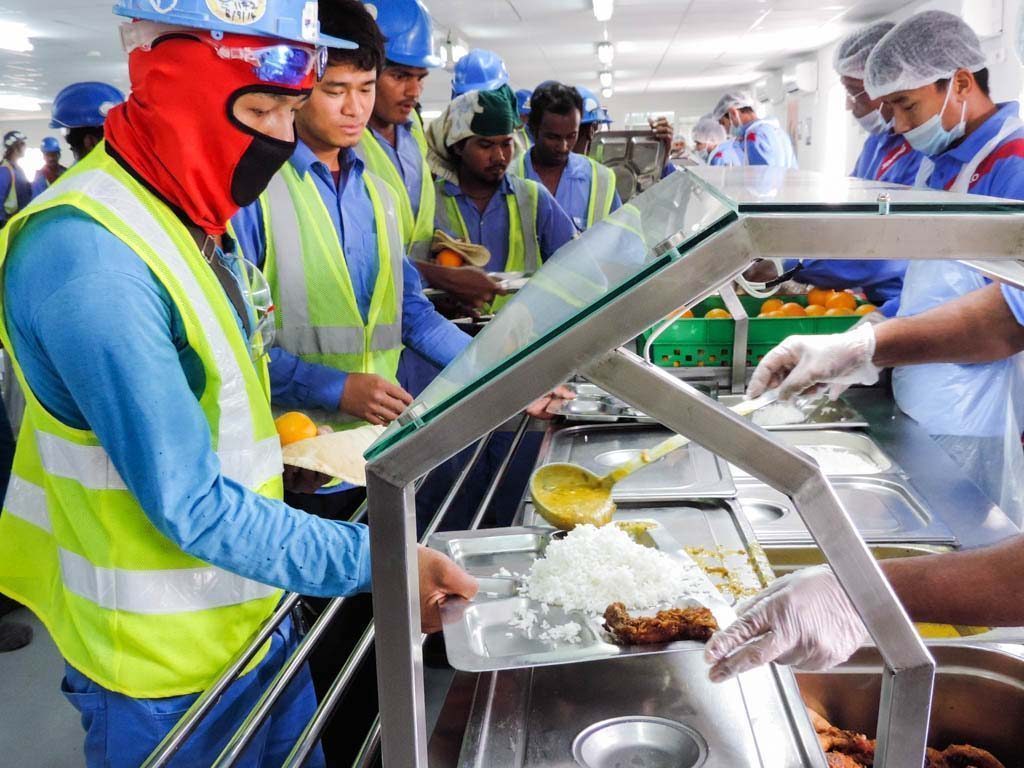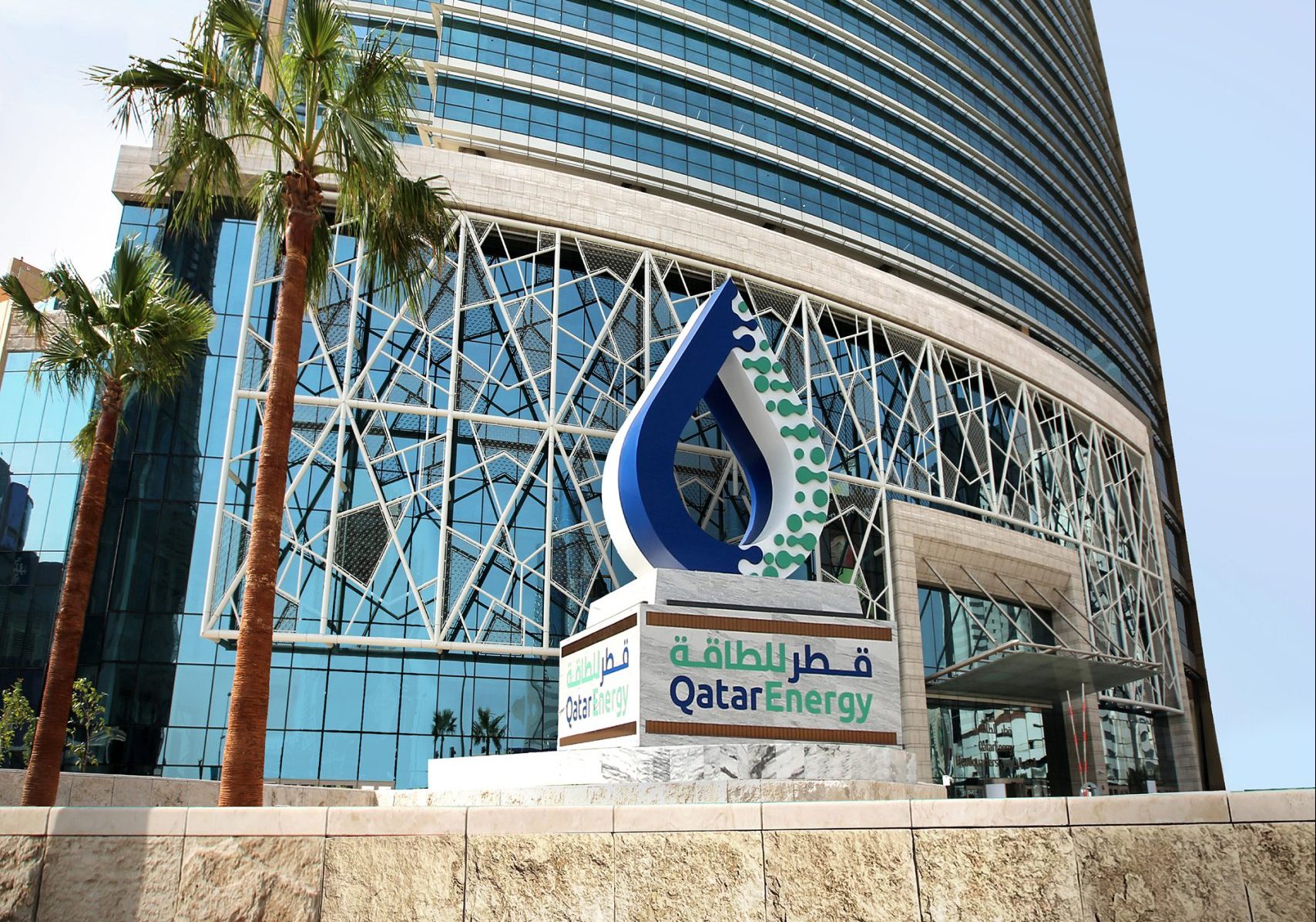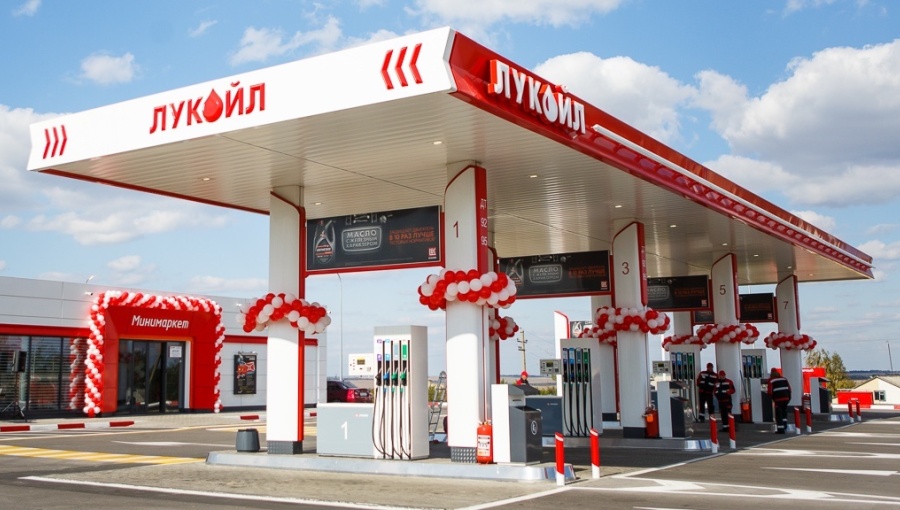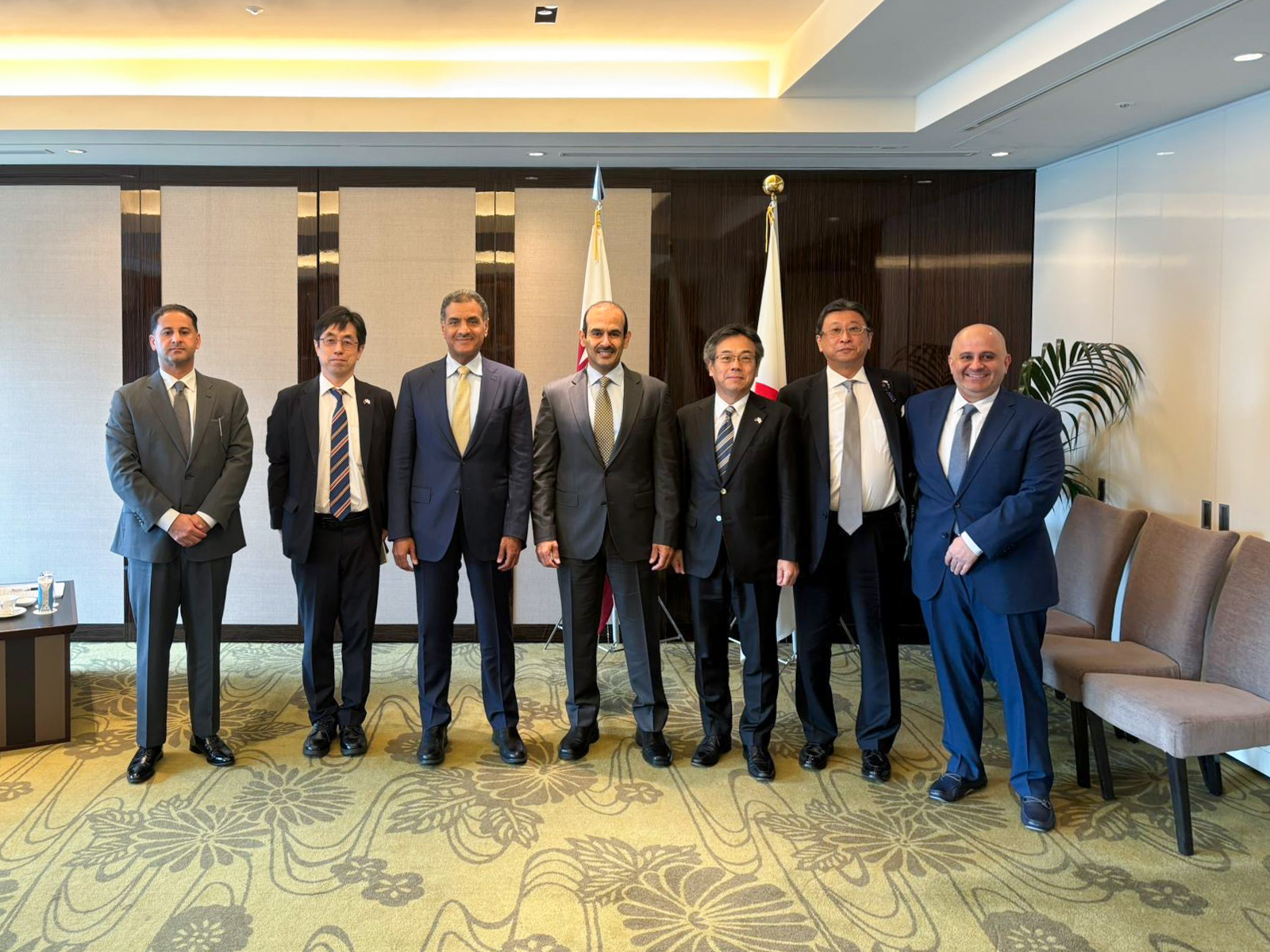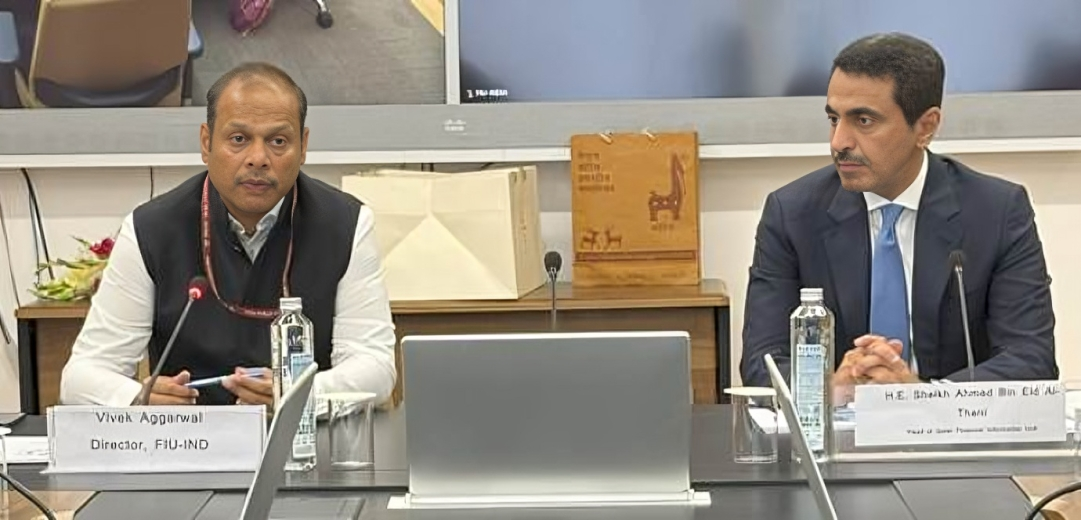
Construction workers at Khalifa International Stadium in Al Wabb like Ishwarlal Gurjar enjoy certain amenities unavailable to most of his counterparts in Qatar.
There, and at a few other sites around the country, Gurjar and his colleagues dine in clean mess halls. When they go home for the night, they sleep four to a room, maximum, and never in bunk beds.
They get to hold on to their passports and have the ability to voice complaints without fear of repercussions.
That’s because employees at these sites are working on building and refurbishing stadiums for the 2022 World Cup.

“I’m enjoying my work. There are no tensions,” Gurjur told Doha News through a translator during a recent site visit to the stadium. “I’d tell my friends (back home) to come to Qatar. The salary is good (and) the food is good.”
The Indian expat, who has a five-year-old son and eight-year-old daughter back home, added that he works six days a week and earns QR1,700 ($467) a month.
Cognizant of fierce international scrutiny amid a dismal human rights record, Qatar’s tournament organizers have set rigid standards for companies working on World Cup-related construction sites.
Those standards are detailed in a workers’ charter that goes above and beyond what’s specified by Qatar’s labor laws.
The Supreme Committee for Delivery and Legacy (SCDL), which oversees construction of Qatar’s World Cup stadiums and training grounds, has said companies that don’t comply with the requirements will be sanctioned or risk losing the project.
No sanctions
But speaking to Doha News this week, the SCDL said no such action has been necessary yet – a claim that comes as a surprise to at least one human rights researcher.

As of last Thursday, no World Cup contractors had been penalized for violating the workers’ welfare standards, according to Stephan van Dyk, the audit and training manager at the SCDL’s worker welfare unit.
The official said the lack of citations stems from pre-screening contractors and making them aware of the SCDL’s standards at an early stage.
For example, 18 companies were disqualified during the bidding process to construct stadiums because their labor camps did not meet the SCDL’s requirements.
“From the moment a contractor is appointed, they have a copy of our standards and know what’s expected from them,” van Dyk said.
Safety steps
Last week, officials from the SCDL as well as construction firms Midmac and Six Construct gave Doha News a tour of Khalifa International Stadium, which is located in the Aspire Zone.

One of least eight facilities that will be used for the World Cup, the Khalifa is slated to be completed by the end of next year.
Other confirmed stadiums where work is underway include Al Wakrah, Al Rayyan and Education City.

Meanwhile, a contract has been awarded to build a stadium in Al Khor and design work is complete for the flagship Lusail Stadium.
At least two more stadiums will have to be announced to meet FIFA’s requirements, and an official recently said that all facilities will be completed by 2020.
The redevelopment project includes doubling its original capacity to 40,000 spectators and adding a new sports museum.
The number of workers on site is currently close to its peak, with 2,900 people on site during the day and an additional 300 working in the evening.
Before the start of each shift, supervisors run through the day’s tasks with their teams and review all the steps, risks, precautions and rules for the various operations, said Sergio Lopes, a health and safety manager with Six Construct.

This is done with the help of an illustrated checklist, designed for a multilingual workforce, that requires workers to identify hazards such as walkway obstructions, raised platforms and exposed steel bars, among other issues, and take appropriate mitigation measures.
Away from the stadium, contractors are expected to perform self-audits of their workers’ accommodation to ensure they meet SCDL standards.
These include meeting minimum safety requirements and dimensions, placing a maximum of four beds to a room and including an air conditioner with the capacity to cool a fully occupied room, even during Qatar’s hottest months.
These results are submitted to the SCDL, which verifies the information during ad-hoc inspections. Van Dyk said some 120 of these random inspections at various labor camps have so far been performed in the past year and a half.
Additionally, contractors are expected to chair a monthly workers’ welfare forum. During these sessions, roughly a half-dozen workers representing the various stadium sites meet to discuss any concerns about their housing, meals or other issues, van Dyk said.

So far, he said the issues he’s been made aware of centered around special meal requests.
Despite these efforts, the SCDL has yet to win over some of its most-informed critics.
Speaking to Doha News, Amnesty International researcher Mustafa Qadri said his organization has doubts about the committee’s ability to completely eliminate the abuse of workers, especially those who are employed by manpower companies rather than directly by the lead contractors.
“(The SCDL is) making genuine efforts to address things around worker’s welfare,” he said. “But problems are still there … it’s very unclear if the inspection system is effective.”
Qadri said Amnesty is continuing to carry out investigations in Qatar and that he would find it “surprising” if no contractors had been penalized for violating workers’ standards as the SCDL has said.
Workers’ view
During the tour of Khalifa Stadium, SCDL officials selected several workers to be interviewed by Doha News in the presence of managers.
They included Gurjar, a 35-year-old pipe-fitter from Rajasthan, India.

He said he had not been subject to any of the abuses that are often reported in Qatar.
For example, he said he did not pay any fees to the recruitment company in India that brought him to the Gulf, and that the employment contract he signed in his home country was identical to the one he received in Qatar.
Gurjur said he came to Qatar four years ago and previously worked on the Qatar Petroleum District in Dafna before being transferred to help redevelop Khalifa Stadium six months ago.
He outlined a typical day, saying it starts with waking up at 4am and spending an hour eating breakfast and washing up before boarding a bus at 5am. The trip from 41 Street in the Industrial Area to the Aspire Zone takes about 40 minutes, he said.

After punching in, he meets with his foreman to review the daily safety briefing and typically starts work around 6:15am.
In addition to short breaks during the day in mobile shelters, workers at Khalifa Stadium take a longer lunch break in a large, well-lit mess hall where they’re served catered meals.
His shift ends at 5pm, when he’s bused back to the Industrial Area, where he showers and eats dinner around 7pm before retiring to his room, which he shares with three other men.
Thoughts?

